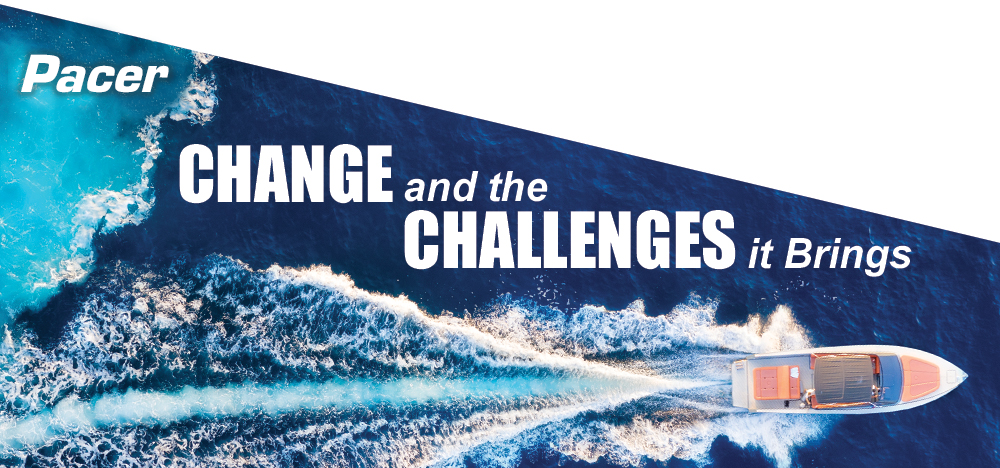Change and the Challenges it brings
Posted by Pacer on 31st Jan 2022

The boating industry has been in a constant state of flux for well over a year now. Pacer and every over wire, marine, or boating company out there has felt the impact. This is due in part to the effects of the pandemic, global supply issues, labor shortages, increased demand, as well as other factors. The boating industry in particular has been struggling to handle the challenges brought by these changes. From purchasing wait lists that go well into 2024 to limited access to parts, the boating industry, and its consumers have found themselves in unfamiliar waters.
"From purchasing wait lists that go well into 2024 to limited access to parts, the boating industry, and its consumers have found themselves in unfamiliar waters."

According to research conducted by Global Market Insights (1), the size of the recreational boating market surpassed 35 billion dollars in 2020 and it is anticipated to grow at over 6.5% CAGR (compound annual growth rate) between 2021 and 2027. One factor contributing to this is rising consumer expenditure on leisure boating activities in Europe and North America. In fact, the NMMA reports that retail unit sales of new powerboats in the United States increased in 2020 by around 12% compared to 2019 (2). This goes to show just how quickly the boating market is expanding. This means increased demand for parts, labor, inventory, and more. Nearly every aspect of the boating and marine industries has felt the impact of these changes.

Boating is so popular that it is the number one preferred outdoor activity according to spending habits. When looking at a report released by the U.S. Department of Commerce’s Bureau of Economic Analysis (3), boating is the number one contributor to the 689-billion-dollar outdoor recreation economy. This means boating easily surpasses hiking, RVing, camping, and many other outdoor activities. Why is this important? The point of this information is to show just how much the boating industry has grown and will continue to grow. In the coming years, boating and water recreation is only going to get bigger and more popular and as boating continues to rise in popularity. The strain these challenges create will only grow as well. The only way companies can hope to compete in this changing market is to adapt to the challenges change will bring, and that is exactly what Pacer is doing.
How Challenges become benefits
While many businesses are worried about staying afloat, Pacer is instead focused on navigating the current. Rather than just trying to meet the needs of our customers, we have developed plans to exceed their expectations. Plans to ensure that our partners and customers can continue to count on us as they have for decades.
One challenge facing much of the boating industry is acquiring the needed parts and components to continue production. This is an issue across all sectors. In order to address this issue, Pacer is working closely with vendors and continuing to explore alternative supply chain options. This idea coupled with a focus on maintaining inventory allows Pacer to preemptively handle any supply chain or inventory-related issues. In addition to the new partnerships with vendors, Pacer is also utilizing this time to integrate and take advantage of emerging technological trends.

Through all of the changes the boating industry has weathered as well as the challenges they have brought, Pacer has looked for ways to press forward. We have developed multiple strategies to make sure that our partners and customers can get the parts that they need when they need them. As we grow our internal team and develop new partnerships, Pacer remains the steadfast trusted partner the boating industry has counted on for decades.
References
(1) https://www.gminsights.com/industry-analysis/recreational-boating-market
